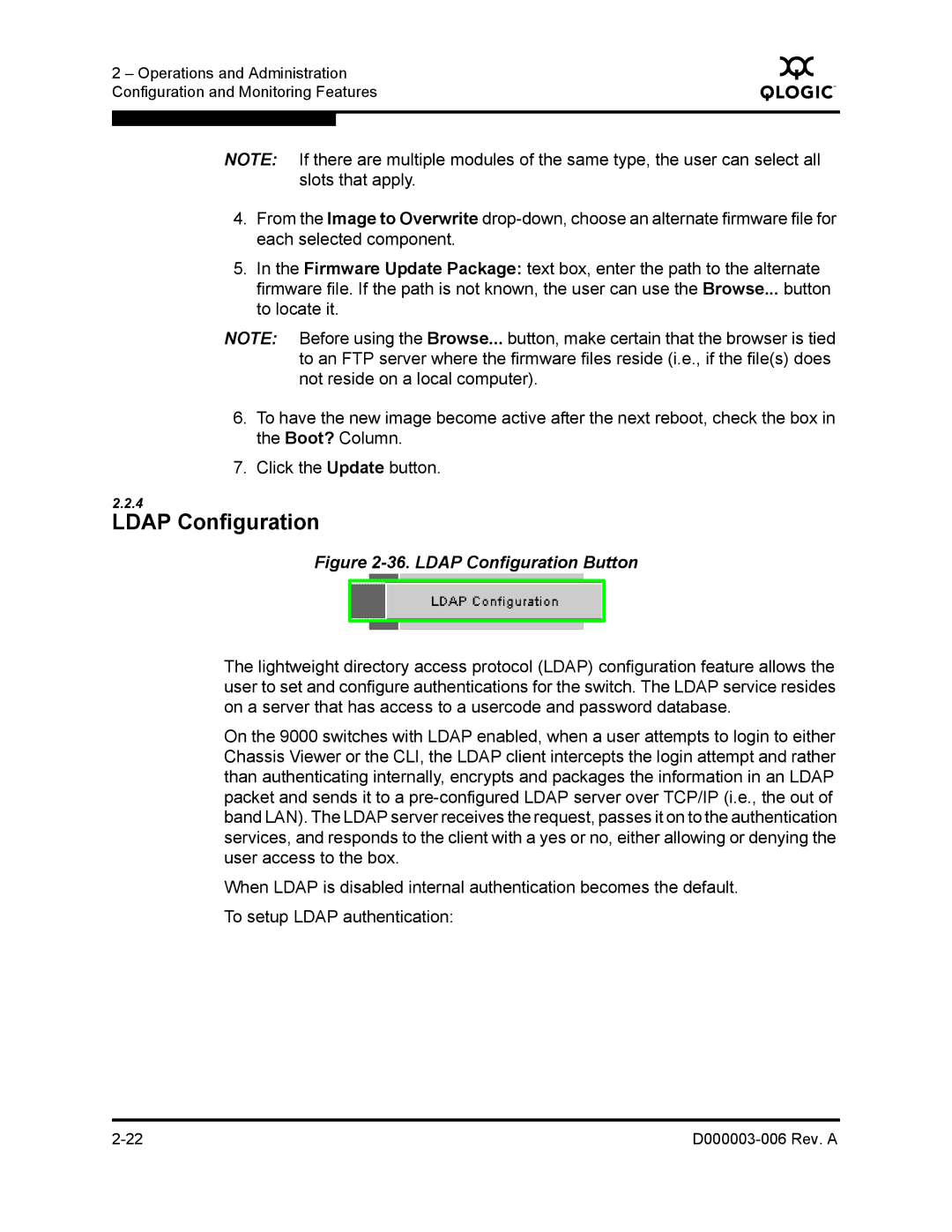
2 – Operations and Administration Configuration and Monitoring Features
Q
NOTE: If there are multiple modules of the same type, the user can select all slots that apply.
4.From the Image to Overwrite
5.In the Firmware Update Package: text box, enter the path to the alternate firmware file. If the path is not known, the user can use the Browse... button to locate it.
NOTE: Before using the Browse... button, make certain that the browser is tied to an FTP server where the firmware files reside (i.e., if the file(s) does not reside on a local computer).
6.To have the new image become active after the next reboot, check the box in the Boot? Column.
7.Click the Update button.
2.2.4
LDAP Configuration
Figure 2-36. LDAP Configuration Button
The lightweight directory access protocol (LDAP) configuration feature allows the user to set and configure authentications for the switch. The LDAP service resides on a server that has access to a usercode and password database.
On the 9000 switches with LDAP enabled, when a user attempts to login to either Chassis Viewer or the CLI, the LDAP client intercepts the login attempt and rather than authenticating internally, encrypts and packages the information in an LDAP packet and sends it to a
When LDAP is disabled internal authentication becomes the default. To setup LDAP authentication:
|
